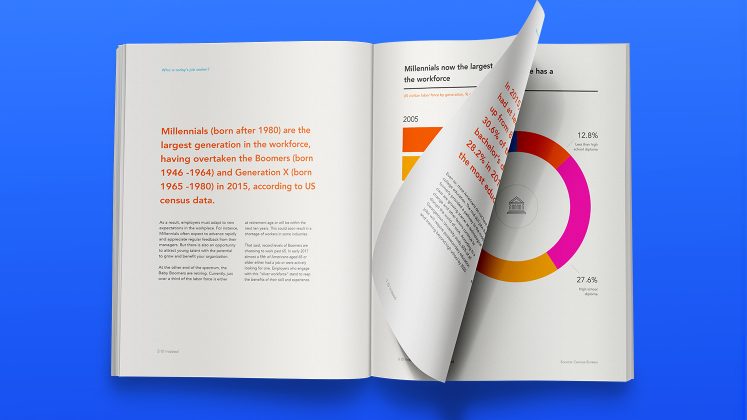Key points:
- The share of postings that mention remote work has nearly tripled since before the pandemic from an average of just 2.5% of job postings in January 2020 to almost 7.5% in September 2021 across the 20 countries we analysed.
- Across countries the increase in the share of remote postings is highest in software development, marketing, media & communication and other knowledge-intensive jobs, where remote working is most feasible.
- Increases in the share of remote postings vary from almost no change in Japan to a 7 percentage-point increase in Ireland, with cross-country differences explained to a notable extent by differences in government-imposed mobility restrictions.
- The easing of mobility restrictions since the spring of 2021 has not led to material declines in the share of remote postings, particularly in countries with good digital infrastructure, suggesting remote work is here to stay.
The pandemic has triggered a surge in remote work. Together with the OECD we analyzed job postings in 20 countries and found that the average share of remote postings across the countries in the study more than tripled from just 2.5% of job postings in January 2020 to 7.9% in April 2021. This increase was driven to a large extent by pandemic-related restrictions, which led to high adoption of remote working in occupations where many jobs can be done from home. Despite the easing of restrictions, the average share of remote postings remained near its peak at 7.5% in September 2021.
Remote jobs are concentrated in certain occupations
The advertisement of remote work in job postings increased in almost all occupational categories since the pandemic began but the rise was particularly large in knowledge-intensive services. For example, the share of remote postings in the average country increased by around 11 percentage points in software development or marketing but less than one percentage point in food, retail, driving or manufacturing.
The main reason for these differences is that remote working is simply not feasible in some jobs. Indeed, the difference in the share of remote work between occupations with high remote work capability, such as software development or marketing and those with medium or low capability, such as food or driving, has more than tripled during the pandemic. The share of remote work increased substantially and almost uninterruptedly in occupations where many jobs can be done from home. In low-remote, in-person job categories the share of remote jobs increased to a much lesser extent and only during the most acute phases of the pandemic. These divergent trends suggest the adoption of remote work will stabilize at different levels across occupations once the pandemic recedes.
The overall increase in remote postings was not accompanied by a material shift of postings from occupations where remote working is not feasible to occupations where many jobs can be done from home. On the contrary, job postings have held up better and recently grown faster in low-remote, in-person job categories, such as healthcare, cleaning, or retail. Part of the reason is that many governments considered these jobs essential, granting workers exemptions from mobility restrictions. Another reason is that some low-remote occupations, like hospitality and retail, suffered major job losses during the pandemic and have therefore seen a stronger rebound in recruitment as restrictions eased. In sum, the shift in job postings between occupations with different degrees of feasibility of remote work only plays a minor role. The increase in advertised remote postings overwhelmingly reflects within-occupation changes.
Pandemic-driven mobility restrictions were a catalyst for remote work
Restrictions to mobility explain about one-third of the differences in the rise of remote postings across countries between January 2020 and April 2021, when the share of remote postings peaked. In countries where mobility restrictions were high, such as Ireland, Italy, Spain or the UK, the share of remote work increased significantly more than in countries where restrictions were low, such as Japan and New Zealand. On average, a 15-point change in the stringency index from the Oxford COVID-19 Government Response Tracker (that ranges from 0 to 100) was associated with a 0.5 percentage point change in the share of remote postings over the five subsequent months.
However, while tightening restrictions were accompanied by a persistent increase in remote job postings, periods of easing of restrictions saw only a modest and transitory decrease in advertised remote work.
Digital infrastructure is key for remote work growth
The level of internet penetration in different countries also affects the adoption of remote work. While tightening restrictions in the acute phases of the pandemic increased the share of remote postings across countries, the easing of restrictions was followed by decreases in the share of remote work in countries with low internet penetration, while the share of remote postings was maintained in countries with high internet penetration.
The persistence of remote work once the pandemic recedes may therefore depend on a country’s level of digital preparedness. In Italy, where internet penetration is relatively low, the share of remote work increased by more than 10 percentage points from January 2020 to April 2021, but decreased by five percentage points in the following five months as restrictions were eased. In contrast, in the US, where internet penetration is high, the share of remote work in postings increased by about seven percentage points between January 2020 and January 2021, at the peak of restrictions, and remained at about that level during the subsequent period of easing, suggesting that companies permanently integrated remote work into their organization rather than treating it as a temporary remedy.
Interestingly, based on our analysis, other plausible enabling factors, such as the average skills of the workforce or the quality of management practices (such as good use of human resources, performance monitoring or target setting), are not related to any systematic pattern in the effect of government restrictions on advertised remote work. This suggests that the average level of skills and management quality are not a binding constraint on the take-up of remote work in the mostly high-income countries covered here.
Conclusion: remote work is likely to remain more common than before the pandemic
Our analysis suggests that government-imposed mobility restrictions have catalyzed remote work. But the easing of restrictions during the spring of 2021 has so far not triggered an equivalent reduction in telework, especially in countries with good digital infrastructure, suggesting that remote work is here to stay even once the pandemic recedes.
In order to benefit from the possible diffusion of remote work in the coming years, public policies should try to make the most of its potential effects on productivity and well-being. This may include ensuring that workers have a suitable working environment (e.g. computer equipment, office and childcare facilities), facilitating the dissemination of best management practices (e.g. moving from a culture of presenteeism to an output-oriented assessment of worker productivity) or ensuring that everyone has access to a fast, reliable and secure internet connection (e.g. in rural areas).
This post draws on a joint Indeed and OECD working paper entitled “Will it stay or will it go? Analysing developments in remote work during COVID-19 using online job postings data” by Pawel Adrjan, Gabriele Ciminelli, Alexandre Judes, Michael Koelle, Cyrille Schwellnus and Tara Sinclair.
Methodology
This article is based on Indeed postings from the following 20 OECD countries: Australia, Austria, Belgium, Canada, France, Germany, Ireland, Israel, Italy, Japan, Luxembourg, Mexico, Netherlands, New Zealand, Poland, Spain, Sweden, Switzerland, the United Kingdom, and the United States. Averages are unweighted.
The occupational classification into low, mid, and high remote work capability is based on the classification of jobs into teleworkable and non-teleworkable developed by Dingel & Neiman (2020). An alternative variable can be constructed using Indeed’s own data on the advertisement of remote work by occupation in 2019. We identify job postings as open to remote work if the job title or description includes terms like “remote work,” “telecommute,” “work from home,” or similar terms, or if the location is explicitly listed as remote. These postings include both permanently and temporarily remote jobs, though employers often don’t specify. While the measure based on Dingel and Neiman (2020) approximates remote work potential, the measure based on Indeed’s own data accounts for the actual pre-pandemic advertisement of remote work in postings, which may differ from potential due to various frictions, including limited availability of digital infrastructure, limited IT skills of workers or management culture. Furthermore, some postings may not explicitly mention remote work but it may be offered or negotiated later. Both metrics give similar results when comparing differences across occupations.
The level of government-imposed restrictions is approximated by the stringency index from the Oxford COVID-19 Government Response Tracker.Data on cumulative cases and deaths come from the same source. Data on the average numeracy skills of the workforce are sourced from the OECD Program for International Assessment of Adult Competencies, while data on countries’ digital infrastructure (average speed and broadband subscriptions per 100,000 inhabitants) are taken from the OECD Broadband Portal. Cross-country scores of management quality in manufacturing firms are sourced from the World Management Survey portal.


